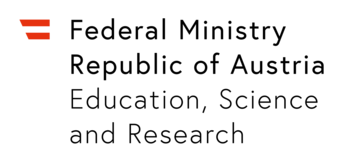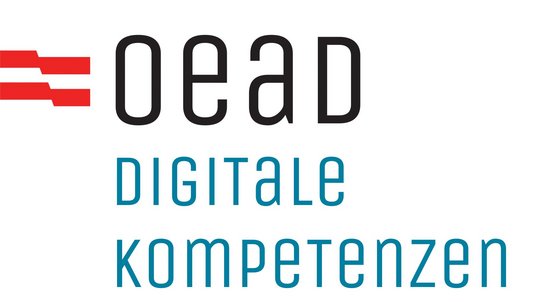
Mapping Learning Outcomes to the Austrian Framework of Reference for Digital Competence
Benefits of mapping education and training offers to the Austrian Framework of Reference for Digital Competence
For course providers and curriculum developers aligning their education and training offers with the National Framework of Reference for Digital Competence brings several advantages:
- Visibility of the content and learning outcomes of their education or training offers and their relation to digital competences.
- Transparent offers and guidance for learners.
- Promotion of nationwide comparability of courses and curricula for digital competence training.
- Alignment of your offers for potential funding opportunities.
Mapping of formal education and training offers
In a pilot project a total of 20 formal curricula have been mapped to the Austrian Framework of Reference for Digital Competence based on their learning outcomes. These include, among others, the lower secondary school subject of Digital Foundations, vocational training such as Office Admninistrator, the primary school curriculum, selected vocational schools and higher educational institutions as well as some university courses. Furthermore a procedural manual for the assignment of formal curricula is included. You can find the final report of the pilot project (in German) here. In 2024 further curricula will be mapped in the next phase.
Mapping of non-formal education and training offers
Submission Process
Take advantage of the opportunity to map your education or training offers to the Austrian Framework of Reference for Digital Competence. We value quality-assured mapping processes, which is why the submission process is divided into two steps:
- Provider check: New providers submit information about their organisation, which is then reviewed based on predefined criteria.
- Seminar check: After the provider check is completed successfully you will receive an individual seminar check link for submitting your courses for review.
If you are already a verified provider and have not received a seminar check link, please contact us.

Publication of mapped courses
All successfully reviewed offers can be published in the public education and training register.
Frequently Asked Questions
You do not need to go through the provider check again. Providers that have already been reviewed and approved have been transferred to the Digital Skills Office from fit4internet.
Existing providers received a personalised link for seminar submissions in April 2024 via their registered email address. If you did not receive the link, you can send a message at any time. We will be happy to resend your link.
You can send a message at any time. We will be happy to resend your link.
You can submit a provider check either as an organisation or as a self-employed trainer. As an independent individual, we require your CV, a relevant pedagogical-didactic qualification, and a description of your professional expertise in the field of digital media.
For your provider check, various documents need to be uploaded during the submission process. You can save the submission form at any time once you have started, but it is certainly more convenient to have all the necessary documents prepared in advance. Here is a list of all required documents (in German).
Currently valid quality certificates from Ö-Cert or other recognised quality management systems, such as regional seals (e.g. CERT-NÖ) or ISO 9001:2015. Here you can find a complete list of quality certificates.
Once your provider or seminar check has been successfully completed, you will be notified via email.
We provide several resources under Quicklinks and Downloads. Please note that most of these documents are in German.
- Guidance on the submission process can be found in the guide for education and training providers.
- The National Framework of Reference for Digital Competence describes the DigComp 2.3 AT competence model and covers the formulation of learning outcomes.
- Our handout on learning outcomes may also support you. Clearly formulated learning outcomes are the basis for mapping your offering to the framework of reference.
The Handbook on the National Framework of Reference for Digital Competence and the handout on learning outcomes explain the proficiency levels using descriptions, key terms, and practical examples.
The individual points in the seminar check tab represent your selection options for proficiency levels, competence areas, competences, and learning outcomes for your submitted course. Your classification in this section defines the minimum level of competences or learning outcomes that can be achieved through your educational offering.
- Here, you can find more information about the DigComp 2.3 AT model, its proficiency levels, and competence areas.
- Additionally, you can access the handout on learning outcomes for further guidance.
Learning outcomes describe the knowledge, skills, and competences a participant has acquired after completing a course. The focus is placed on the results of learning and the competences gained, rather than on the course content delivered. Unlike learning outcomes, course content refers to a list of topics covered in an educational offering. Detailed information about learning outcomes can be found in our handout on learning outcomes and the Handbook on the National Framework of Reference for Digital Competence.
Prepare a course image and a provider logo, and make sure to include the image source when uploading. Both the source and the creator (photographer) must be specified. If the image has been edited, please also mention who performed the edits. Here is an example of a correct citation: Source: unsplash.com, Maria Musterfrau (Edits: IT Training GmbH).
Preferred formats are .jpg, .jpeg, .gif, and .png.
Maximum file size: 5MB
Recommended resolution in pixels: 2000x1400.
Describe the methods you use in your course to foster the development of digital competences among participants (e.g., lectures, individual exercises, pair exercises, presentations by learners, written self-tests, worksheets, scripts, etc.). If applicable, explain any specific didactic requirements arising from the target group or course content.
An overview of your submitted courses is currently not available. We recommend keeping your own record of the courses you have submitted.



